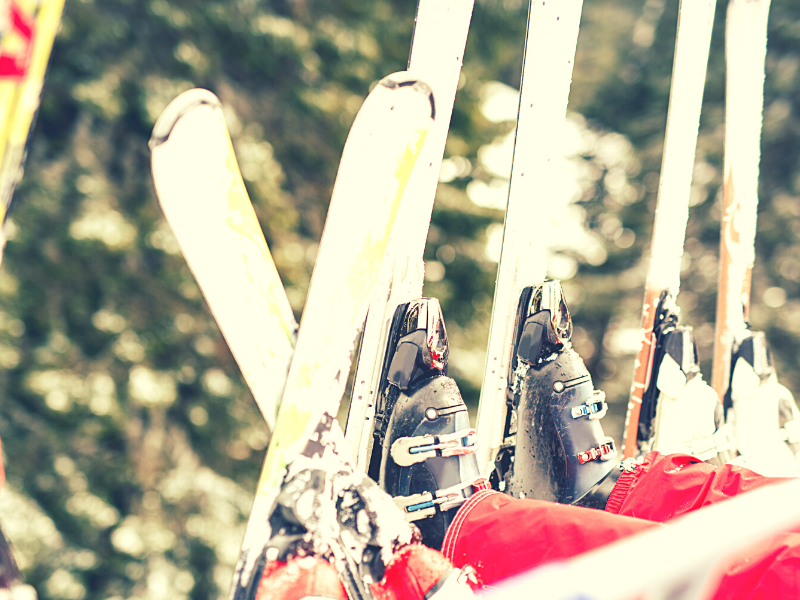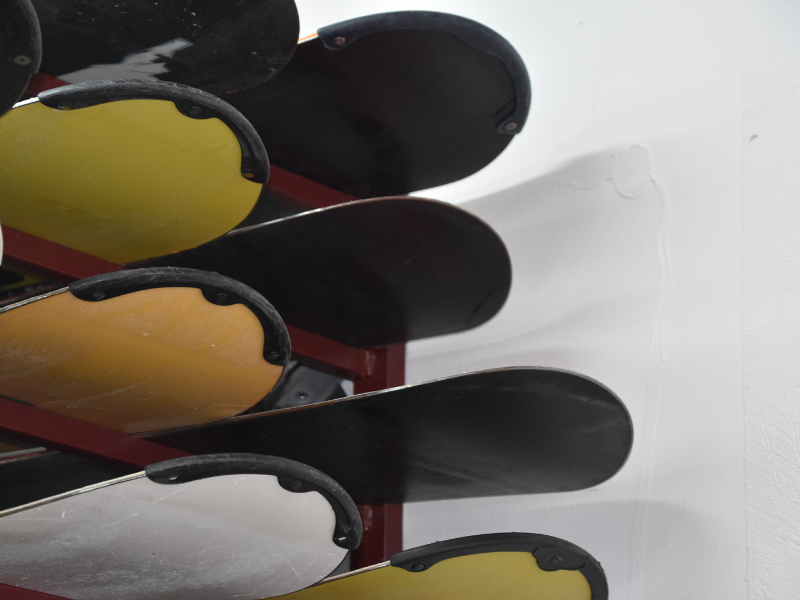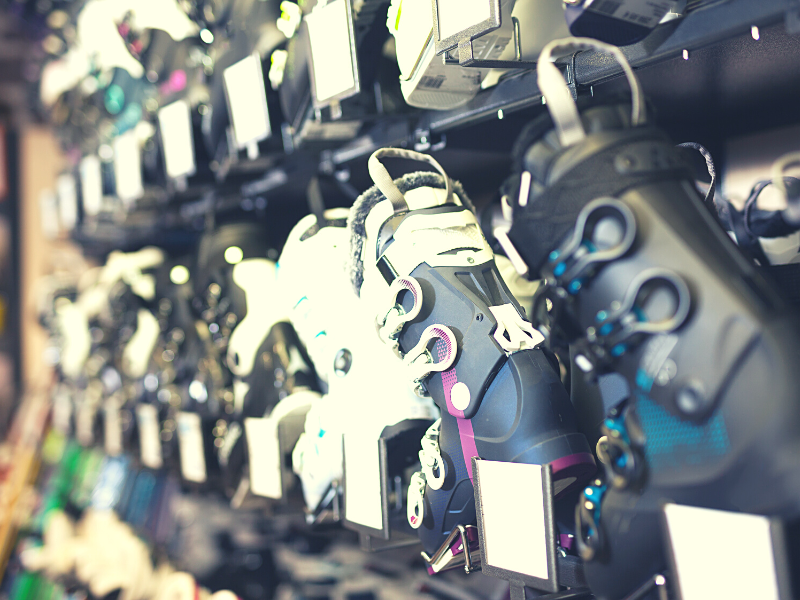When most people think of skiing, they picture alpine skiing, with its long runs, high speeds, and big air. But the world of skiing is bigger than alpine, and skiing can take many different forms, stemming from three main categories. So then, what are the three main types of skiing?
The three main categories of skiing are alpine, nordic, and alpine touring. Each is defined by how the boot links to the ski. In alpine, both the front and back attach to the ski. However, with nordic, only the front attaches. And alpine touring is a hybrid, where the heel can be free or fixed.
There's more to each than just how the boot connects to the ski, in fact, they've spurred several skiing subtypes that you know and probably love. So read on to learn how to spot the difference, speak more confidently, and discover which subtypes of skiing fall under which of the three main categories. Let's get started!
The Three Main Types of Skiing and Their Subtypes
Freestyle, downhill, telemark, cross-country - every subtype of skiing comes from alpine, nordic, and alpine touring. It can get confusing with how many types of skiing there are, but every name associated with a style can be categorized under the main three types of skiing.
The following will give you a snapshot of the three main categories of skiing and any subtypes that fall within them. You'll also get a summary of the activity, what makes it unique, and the type of gear needed for each.
A quick disclaimer - some forms of skiing can fit into one or all three of the main categories based on the type of skis a person selects, however, this article will stay true to its roots and categorize subtypes based on the most common way a ski boot attaches to the ski, in specific subtypes.
Additionally, there are so many forms of skiing, you'll just see the major subtypes, but even within each of those, there are different branches of skiing.
1. Alpine Skiing - The Most Popular Form of Skiing
Alpine skiing is the most widely known and practiced form of skiing. It's what most people envision when they think of skiing, with skiers zipping down long slopes at high speeds, carving turns, or doing aerial flips and tricks.
And because its direction is from the top of a mountain going down, it's more commonly referred to as downhill skiing.
Defining Feature of Alpine Skiing
Alpine skiing is defined by how both the front and back of the boot are attached, providing more control and power when carving turns.
Subtypes of Alpine Skiing
While alpine skiing is the most popular form of skiing, and downhill skiing is technically a subtype, it's also given rise to some of the most popular subtypes, which we've detailed below.
- Alpine Skiing/Downhill Skiing: If you're picturing alpine skiing in your head, then you're likely thinking of downhill skiing. It's the most popular form of alpine skiing and what most people consider when they hear the word "skiing." Downhill skiing is typically done on groomed runs at a resort, with a set path that has been cleared of moguls, trees, and other obstacles.
- Freestyle Skiing: Often seen in the Winter Olympics, freestyle skiing is a form of alpine skiing that includes tricks and flips. There are several disciplines within freestyle skiing, including moguls, slopestyle, halfpipe, ski cross, and aerials. Ski Cross racing was added to the Winter Olympics in 2010, with athletes racing down a course with jumps, berms, and rolls.
Unique Gear Needed for Alpine Skiing
Alpine skiing requires some specific gear to be performed correctly and safely.
- Skis: Alpine skis are generally longer and narrower than other types of skis. They're designed this way to provide more stability at high speeds and on harder snow.
- Boots: Alpine boots are stiffer than other types of ski boots and have a high ankle to provide support.
- Bindings: Alpine bindings attach the ski boot at the toe and heel, providing more control when carving turns.
2. Nordic Skiing - The Traditional Form of Skiing
Nordic skiing is a type of skiing that involves using long, narrow skis to travel over snow-covered terrain. Unlike alpine skiing, nordic skiing generally takes place in open, natural areas rather than at ski resorts. It's a great activity for all levels, from beginners to experts, and anyone looking for a solid full-body workout.
Nordic skiing is the original form of skiing and dates back thousands of years. It's believed to have started in Scandinavia as a way to travel between villages during the winter months.
Defining Feature of Nordic Skiing
Nordic skiing is defined by how the front of the boot is attached to the ski, but the back is not. This allows for a greater range of motion at the ankle, which is necessary for the skating motions used in cross-country skiing.
Subtypes of Nordic Skiing
Nordic skiing can be divided into three main subtypes: cross-country, skijoring, and telemark:
- Cross-Country Skiing: This is the most popular type of nordic skiing. It involves moving across the snow-covered terrain without making large turns. Skiers use their poles to help them propel themselves forward. Cross-country skiing can be done on groomed trails or in backcountry areas.
- Telemark Skiing: Telemark skiing involves making large turns while descending a hill. Telemark skiing gets its name from the Telemark region of Norway, where the sport originated. Telemark skiing requires special bindings that allow the heel to lift off the ski while the toe remains attached. Telemark is one of the forms of skiing that could fit into alpine skiing based on its downhill nature, or even alpine touring, but because of how the heel is always free, it is technically a form of nordic skiing.
- Skijoring: Skijoring is a type of nordic skiing that involves being pulled behind a horse or a dog. Skijoring originated in Norway as a way for farmers to travel across snowy fields quickly. Today, skijoring is mostly done for recreation.
Unique Gear Needed for Nordic Skiing
Nordic skiing requires special gear, including skis, poles, boots, and bindings.
- Skis: Cross-country skis are longer and narrower than alpine skis, and they have curved tips. Skijoring skis are shorter and have straighter tips so that they can maneuver through deep snow more easily. Telemark skis are similar to alpine skis in terms of shape and size.
- Poles: Nordic ski poles are also longer than those used in alpine skiing.
- Boots: Nordic ski boots are designed to provide support and maneuverability while remaining comfortable for long periods, and bindings vary depending on the type of ski being used.
3. Alpine Touring - The Most Versatile Form of Skiing
If you're looking for a style that offers the most versatility and exploration, you might want to consider alpine touring. This type of skiing takes place outside of marked trails and areas.
You'll have to hike or skin your way up to the top of the mountain before you can enjoy the descent.
However, many skiers find that the effort is well worth it because it allows them to explore untouched powder and navigate terrain that would otherwise be inaccessible.
Alpine touring combines elements of both alpine and nordic skiing, making it a great option for those who want to explore the backcountry but don't want to give up the ability to make big turns.
Defining Feature of Alpine Touring
Alpine touring allows the heel to lift off the ski while the toe remains attached, and then reattach the heel as needed. This design allows skiers to travel uphill without losing their downhill skiing performance.
This is in contrast to traditional alpine skiing, which uses rigid bindings that only allow skiers to move side-to-side to go uphill.
The increased flexibility afforded by alpine touring bindings makes it possible for skiers to kick and glide forward while they're making their way uphill.
Additionally, alpine touring bindings often have the ability to release from the ski in the event of a fall, which can help prevent injuries.
Subtypes of Alpine Touring
While there is lift-accessed alpine touring, this section will focus on randonee. Randonee is French for "to roam," and is the term used for alpine touring that is done outside of resorts.
Randonee requires skiers to hike or skin their way to the top of the mountain before they can ski down.
Within randonee, there are two recreational subtypes of alpine touring: backcountry skiing and ski mountaineering.
- Backcountry Skiing: Backcountry skiing is the most popular type of alpine touring. Backcountry skiers typically stay close to trails and areas that have been evaluated for avalanche danger. While backcountry can certainly be done with alpine skis, because of the demand to go uphill, touring skis are far more suited for this style.
- Ski Mountaineering: Ski mountaineering is similar to backcountry skiing, but with a few key differences. Ski mountaineers typically go off-trail and into more remote, rugged terrain. In addition to skis, ski mountaineers often use climbing gear such as ropes and crampons to navigate their way up steep or icy slopes.
Unique Gear Needed for Alpine Touring Skiing
If you're interested in trying out alpine touring, you'll need some specialized gear in order to get started.
- Touring Skis: Touring skis are similar to alpine skis, but they're often lighter and more maneuverable. This is because they're designed for going uphill as well as downhill.
- Bindings: Alpine touring bindings are different from traditional alpine bindings in that they allow the heel to be lifted off the ski while the toe remains attached. This design helps skiers travel uphill without sacrificing their downhill skiing performance.
- Skins: Skins are strips of material that attach to the bottom of touring skis. They provide traction so that skiers can move uphill without slipping backward.
There Are 3 Main Types of Skiing, But Numerous Subtypes
There are three main types of skiing, but there are numerous subtypes that can be further divided into. Alpine skiing is the most popular type and takes place mostly on groomed trails in ski resorts.
Nordic skiing is done outside of resorts on ungroomed cross-country trails. Alpine touring combines elements of both alpine and nordic skiing, making it a great option for those who want to explore the backcountry.
Regardless of which style you try, you'll absolutely enjoy the experience, and get some amazing exercise in the process.



